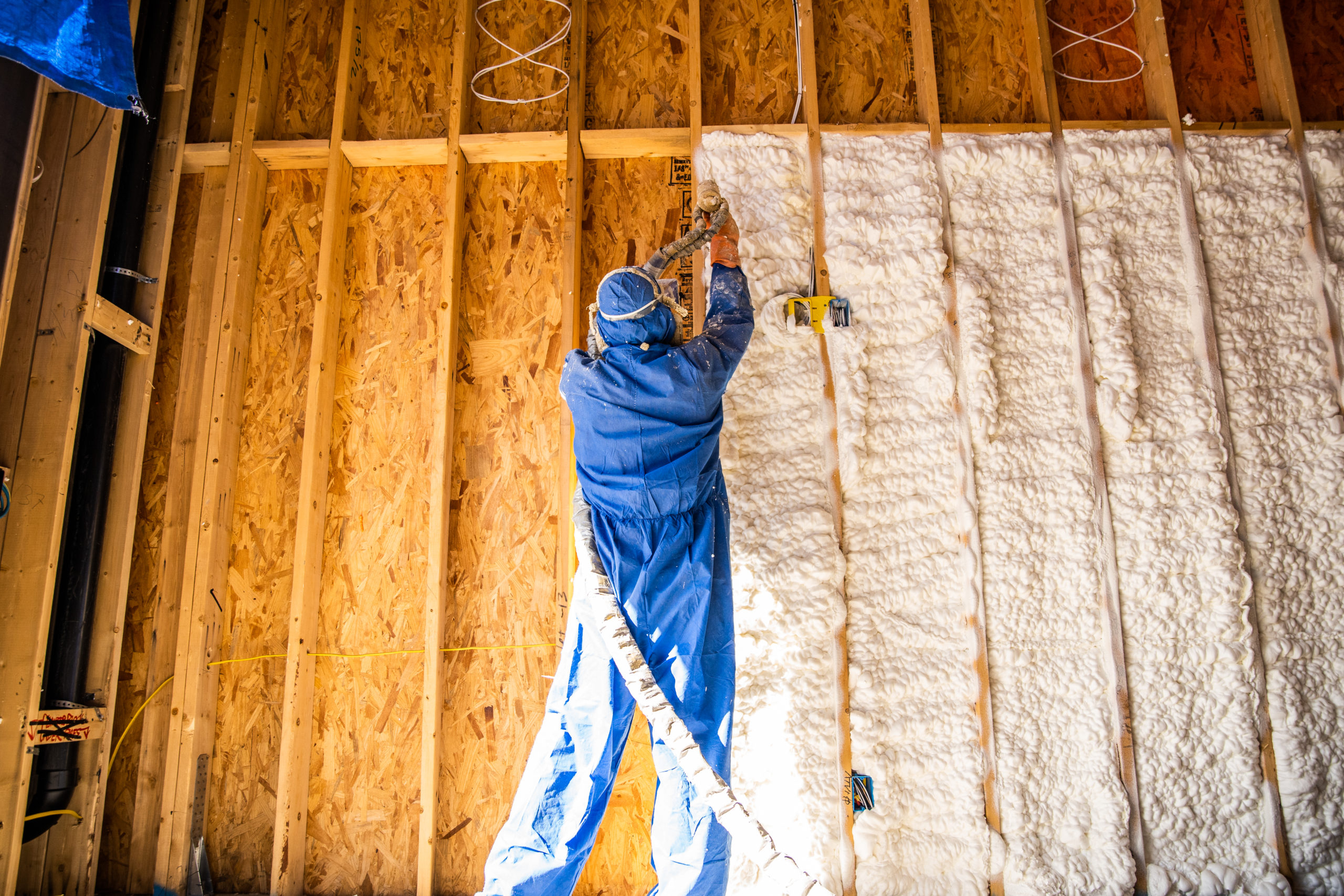
When choosing insulation for your project, whether you are re-insulating your attic or doing new construction, one of the most important properties to consider when deciding which insulation option is right for you is density. The density of insulation is closely related to its structural strength a.k.a the structural integrity of your project. The lower the density you have the softer the foam becomes.
Polyurethane, better known as spray foam, has some of the widest ranges in densities among common insulation materials, making it one of the most reliable and effective insulation materials for most projects or applications! However, there are various spray foam insulation options available, each with their own unique properties, including individual densities.
The differences between spray foam densities make each formula great for different kinds of projects. Without a proper understanding of the differences between spray foam densities, you may end up using a density unfit for the job. Using a low-density spray foam when a medium or high-density spray foam is more appropriate can result in less structural strength, as well as loss in temperature regulation.
In short: using the wrong spray foam can end up costing you big dollars over time with the money you waste on air conditioning and heating.
So, understanding each option before you make any decisions for your project will help you avoid any potential mishaps or sub-optimal applications. Here are the three different kinds of spray foam densities, and everything you need to know about measuring density.
Kinds of Spray Foam Densities
The density of spray foam is determined by the volume of spray foam applied during application, measured in pounds per cubic foot. Higher density spray foams will require more product per cubic foot, and will have a closed cell structure.
High-Density Spray Foam
High-density spray foam, no surprise here because of the name, has the most dense structure of spray foams available. Because it’s so dense, a much higher volume of foam is used during application, roughly 3 lbs. per cubic foot. The R-value of high-density spray foam starts around 5.5 per inch.
Its density, high R-value, and closed cell structure giving it better structural strength, all combine to make it the spray foam of choice when only the toughest and strongest insulation will do. This kind of spray foam is commonly used to insulate and protect roofs and other outdoor applications.
Medium-Density Spray Foam
Medium-density spray foam R-value can have some range, starting at 5.7 per inch, or, like Accufoam®, an R-value of 6.5 per inch. Medium-density spray foam is also composed of a closed-cell structure, and is applied at around 2.0 lbs. per cubic foot. This form of spray foam can be applied as both low and high-pressure two-component foams, determined by the scope and size of the project.
Medium-density spray foam can be used on both large projects where high R-values are provided or smaller projects wherever there is a need for a more detailed and precise application around tight corners or smaller spaces.
Low-Density Spray Foam
Low-density spray foam has a relatively low R-value of 3.6 per inch and uses just 0.5 lbs. per cubic foot, partly due to the open-cell structure it possesses. Because of these open cells, air penetrates more easily, making it lighter, more flexible, softer, and less dense.
Like medium-density formulas, low-density spray foam can also be applied in two different ways depending on the application. Whether you need high R-values or detailed applications, low-density spray foam can be a good fit for you.
Density Measurement Formula
Now that you know the difference between spray foam densities, the question becomes: how do you test spray foam densities in the field for yourself? Are you getting the best bang for your buck?
Testing the density of your spray foam insulation is an important task to get done before you even start your application process. It is important to always make sure you are getting the right product you need for all of your projects. Taking this precaution step can help you save more money in the long run.
Although it is a relatively simple procedure, it requires some equipment and plugging a few specific pieces of information into a mathematical equation.
Or, to make it easier, you can let us do the heavy lifting and calculations for you!
Accufoam®’s spray foam density calculator can help you determine the density of your spray foam application and help you determine if the job has been done properly in just a few minutes. Try the free calculator out for yourself!
The Accufoam® Difference
Spray foam insulations are highly sensitive and small changes in ingredient reactivity, moisture, and gravity can dramatically change how a foam behaves, expands, and adheres from batch to batch. These irregularities have led to inconsistent results and caused headaches for contractors and homeowners alike with their spray foam projects… until now.
After 2.5 years of R&D and thousands of batches tested in real-world environments instead of lab conditions, Accufoam® has achieved a precision spray foam insulation solution that can give you the confidence that you’ll achieve consistent results, consistent density, consistent R-value, and most importantly, consistent protection for each and every job.
To learn more about the magic of Accufoam®, call (205) 851-1863 or contact us online.


